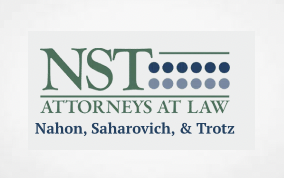Cannabis tax revenue remains a central argument for legalization. In the decade since adult-use markets first launched, local, and state governments have allocated billions of dollars in collected cannabis taxes to fund educational infrastructure, substance abuse prevention and treatment programs, public safety and many other initiatives designed to improve the lives of those living in states with legal cannabis markets.
There is an irony here. It is almost as if the drug war has turned in on itself, with money from the once demonized cannabis plant being used on treatment and support of individuals addicted to pharmaceutical opioids, alcohol, and other “legal” drugs.
It’s also important to scrutinize how cannabis taxes are structured and acknowledge the harms of overregulation and overtaxation, something we have seen at Holland & Hart time and again helping licensed operators navigate complex cannabis regulations for tax collecting, license transfers, reporting, and other compliance matters. One thing is clear: while the goals are noble, cannabis taxation has its flaws and unforeseen consequences.
Types of Taxes on Cannabis
Tax structures governing cannabis sales vary across legal markets. Some states levy multiple taxes (such as an excise tax on wholesale transfers), and local governments commonly impose their own separate taxes. Of course, all of these cannabis taxes get passed to the consumer, who may also pay general state and local sales taxes on their purchases.
The complexity doesn’t end there. States tax various cannabis products in different ways, including: a percentage-of-price tax, a weight-based tax, and a potency-based tax. For example, Washington levies a 37% sales tax on cannabis purchases, while Illinois does not have any sales tax but does levy a 7% excise tax of value at the wholesale level, a 10% tax on cannabis flower or products with less than 35% THC, a 20% tax on products infused with cannabis, such as edible products, and a 25% tax on any product with a THC concentration higher than 35%.
Cannabis Tax Revenue Funding
All of those percentages of sale add up quite quickly and are allocated in different ways. Some of the cannabis tax revenue goes to education-related initiatives like school construction, school food programs, before- and after-school enrichment programs, and public libraries. Other funding is directed toward public health and community programs like alcohol and drug treatment, job training, conviction expungement, and services for veterans. Investment in traditionally underserved or underdeveloped communities is also common in some states.
It’s important to note that tax structures are subject to change due to sunsetting legislation, ballot initiatives, and other bureaucratic maneuvers. Here is where the money currently goes in some of the states with the highest returns from cannabis taxation.
Colorado
Colorado voters legalized adult use of cannabis in 2012 and state-licensed dispensaries started sales in 2014. Colorado levies a standard state sales tax (2.9%), a retail marijuana sales tax (15%), and a retail marijuana excise tax (15%) on wholesale sales/transfers of retail marijuana. In 2021, Colorado recorded $423,486,053 in cannabis tax revenue.
The state allocates 10% of the collected marijuana retail tax to local governments, apportioned according to the percentage of sales occurring within city and county boundaries. The remaining 90% is allocated as follows:
- 15.56% of the revenue goes to the General Fund
- Education
- Health care
- Human services
- Corrections
- 12.59% goes to the Public School Fund
- 71.85% goes to the Marijuana Tax Cash Fund
- Health care
- Health education
- Substance abuse prevention and treatment programs
- Law enforcement
- Education
- The School Health Professional Grant program to address behavioral health issues in schools.
- A grant program to help schools and districts set up initiatives to reduce the frequency of bullying incidents.
- Grants to fund drop-out prevention programs.
- Early Literacy Competitive Grants to ensure reading is embedded into K-3 curriculum.
- A grant to expand concurrent enrollment programs.
- Grants to fund physical education courses and social-emotional health programs for K-5 students.
Revenue from the excise tax of wholesale sales goes to the Building Excellent Schools Today (BEST) fund. The first $40 million collected annually is earmarked for capital construction projects “to repair or replace Colorado’s most needy public school facilities.” The cannabis money is commingled with State Land Board proceeds, Colorado Lottery spillover funds, and interest accrued in the Public School Capital Construction Assistance Fund. Matching funds are required by statute and calculated based on a series of factors, from the particular district’s bond election efforts over the past 10 years to the district’s assessed value per pupil. School projects completed thanks to the BEST fund include HVAC and electrical upgrades, fire and safety improvements, roof replacements, adding ADA-compliant restrooms and abating hazardous materials.
In Denver, the City Council recently announced approval to use approximately $15 million of Denver’s cannabis sales tax for the city’s first investment program focused on minority and women-owned businesses. Establishing quality job opportunities, a pipeline of entrepreneurs and small business startups, and generational wealth for Denver-based business owners who have historically lacked investment opportunities, are the goals of the Malone Fund.
Washington State
Washington launched adult-use sales in 2014, a few months behind Colorado. With its 37% cannabis retail tax coupled with a 6.5% standard retail sales tax, the state pulled in $559.5 million in 2021. Some of the funds directed to public health and research include:
- The state health authority for an annual healthy youth survey
- Measure drug use and other behaviors that contribute to morbidity, mortality, and social problems
- The University of Washington for marijuana-related educational programs
- The state’s health professions account
- Provides an accounting and resource allocation vehicle for licensing activity of health professions
- Various state departments for research related to pesticides, licensing, accreditation, and testing
California
The largest legal market in the nation adopted laws for legal adult use in 2016 and collected staggering $1.3 billion in revenue in 2021. The initial taxation arrangement for cultivators was $10.08 per ounce for flower, $3.00 per ounce for leaves, and $1.41 per ounce for fresh plant. But, on July 1, 2022, through AB 195 California announced it would remove cultivation taxes and instead impose a 15% excise tax on retail purchases of cannabis or cannabis products beginning in January 1, 2023. Beginning in the 2025–26 fiscal year and every two years thereafter, California will determine whether the cannabis excise tax rate should be adjusted to ensure revenue generated is in line with what would have been collected through the cultivation tax to a maximum of 19% of the gross receipts of retail sales.
This is how the California distributes its cannabis taxes:
- All regulatory and research costs must be covered first
- 60% goes to anti-drug programs
- Youth Education Prevention, Early Intervention and Treatment Account (YEPEITA)
- Prevention and early intervention services including outreach, risk survey and education to youth, families, schools, primary care health providers, behavioral health and SUD service providers, community and faith-based organizations, foster care providers, juvenile and family courts, to recognize the reduce risks related to substance use, and the early signs of problematic use.
- Grants to schools to develop and support Student Assistance Programs, designed to prevent and reduce substance use, and improve school retention and performance. Schools with higher than average drop-out rates will be prioritized for grants.
- 20% goes to environmental programs
- Combat illegal grows and wildland restoration
- Road improvement
- Local park investment
- 20% goes to public safety
- Science and policy research
- Law enforcement
- Fire protection
- Local programming to address public health and safety associated with the implementation of Proposition 64.
Elsewhere, Missouri voters in 2018 adopted Constitutional Amendment 2, known now as Article XIV, which includes a provision requiring that fees and taxes generated by the medical marijuana program, less operational expenses, be transferred to the Missouri Veterans Commission for health and care services for military veterans. Since dispensary sales began in October 2020, more than $335 million in sales have occurred—with almost $9 million going to veterans as of the end of 2021—thanks to a sales tax rate of 4% on medical marijuana.
In Oregon, police and mental health treatment centers receive funding, but the biggest recipients are the state’s schools, which receive 40% of the state’s cannabis tax revenue.
At the national level, cannabis remains illegal, but among various bills in Congress, the MORE Act (Marijuana Opportunity Reinvestment and Expungement) has passed the House and if (ever) approved by the Senate, would establish a sales tax at 5% which would increase to 8% over three years. The tax would be imposed on the retail sales of cannabis and proceeds from the tax would go to a newly established Opportunity Trust Fund. A new governmental organization, the Cannabis Justice Office, would be tasked with overseeing the social equity provisions of the MORE Act.
50% of the money would support a Community Reinvestment Grant Program, 10% would support substance misuse treatment programs, and 40% would go to the federal Small Business Administration to support implementation of a newly created equitable licensing grant program. The Community Reinvestment Grant Program would provide eligible entities with funds to administer services and programs for individuals adversely impacted by the War on Drugs.
While the industry has worked with governments to establish reasonable taxation regimes, excessive taxes will drive consumers to the black market. Using cannabis taxes as a resource to fill budget gaps created by tax favoritism of other industries is not a solid approach to responsible fiscal policy. In order for the legalization of cannabis to be a long-term success, the industry, legislatures, regulators, and even prohibitionists need to work together to make sure the safer legal cannabis market is not overtaxed to the point that it can no longer survive.
Source: JD Supra
https://www.jdsupra.com/legalnews/cannabis-taxation-where-does-the-money-6588066/



































